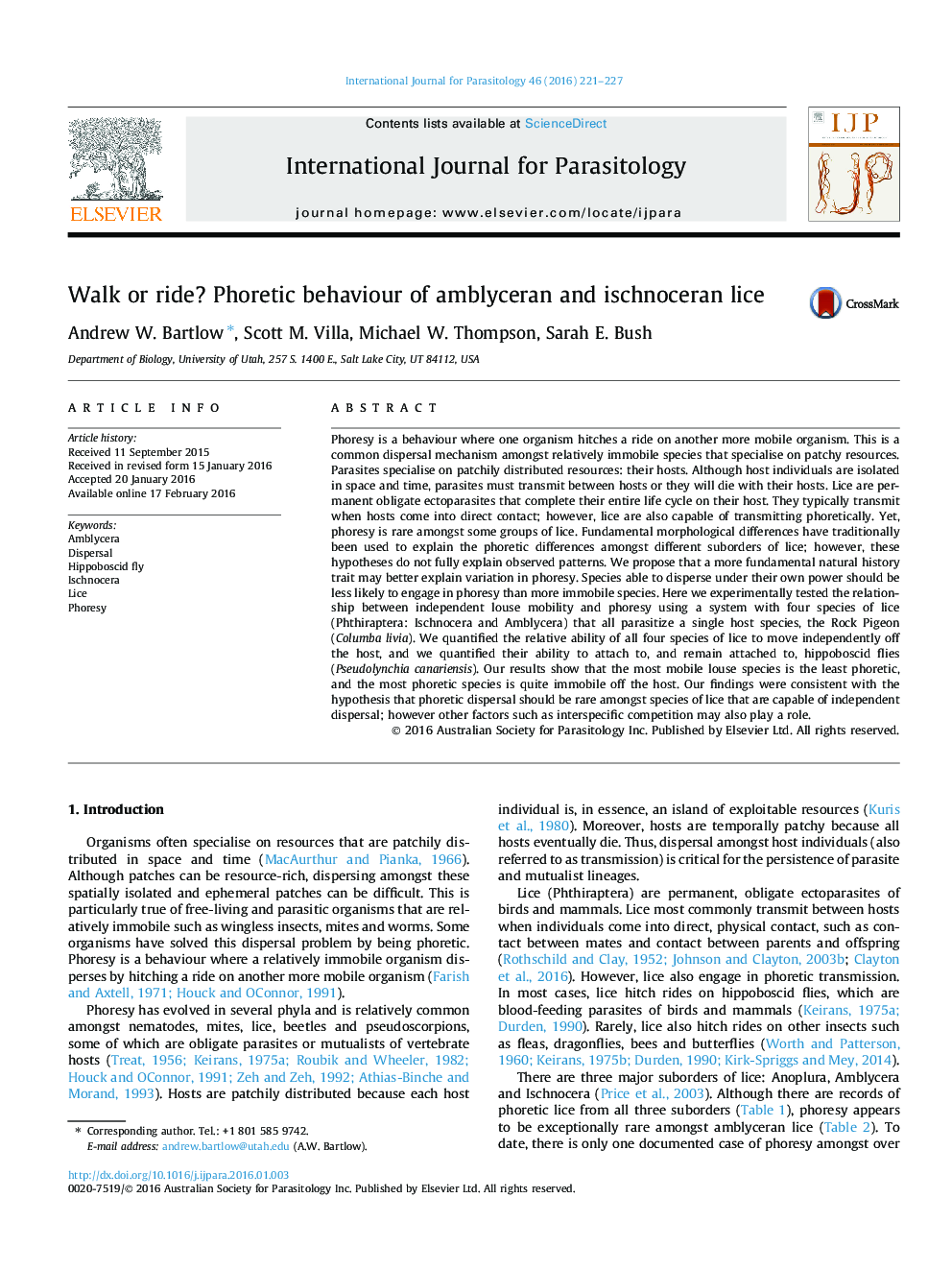| کد مقاله | کد نشریه | سال انتشار | مقاله انگلیسی | نسخه تمام متن |
|---|---|---|---|---|
| 2435951 | 1107234 | 2016 | 7 صفحه PDF | دانلود رایگان |
• Phoresy should be a universal behaviour amongst immobile symbionts.
• We investigated the relationship between immobility and phoretic ability.
• We conducted experiments using a rock pigeon-fly-louse model system.
• Highly mobile species displayed less phoretic behaviour than immobile species.
• The most phoretic species was one of the most immobile species.
Phoresy is a behaviour where one organism hitches a ride on another more mobile organism. This is a common dispersal mechanism amongst relatively immobile species that specialise on patchy resources. Parasites specialise on patchily distributed resources: their hosts. Although host individuals are isolated in space and time, parasites must transmit between hosts or they will die with their hosts. Lice are permanent obligate ectoparasites that complete their entire life cycle on their host. They typically transmit when hosts come into direct contact; however, lice are also capable of transmitting phoretically. Yet, phoresy is rare amongst some groups of lice. Fundamental morphological differences have traditionally been used to explain the phoretic differences amongst different suborders of lice; however, these hypotheses do not fully explain observed patterns. We propose that a more fundamental natural history trait may better explain variation in phoresy. Species able to disperse under their own power should be less likely to engage in phoresy than more immobile species. Here we experimentally tested the relationship between independent louse mobility and phoresy using a system with four species of lice (Phthiraptera: Ischnocera and Amblycera) that all parasitize a single host species, the Rock Pigeon (Columba livia). We quantified the relative ability of all four species of lice to move independently off the host, and we quantified their ability to attach to, and remain attached to, hippoboscid flies (Pseudolynchia canariensis). Our results show that the most mobile louse species is the least phoretic, and the most phoretic species is quite immobile off the host. Our findings were consistent with the hypothesis that phoretic dispersal should be rare amongst species of lice that are capable of independent dispersal; however other factors such as interspecific competition may also play a role.
Figure optionsDownload high-quality image (78 K)Download as PowerPoint slide
Journal: International Journal for Parasitology - Volume 46, Issue 4, April 2016, Pages 221–227
